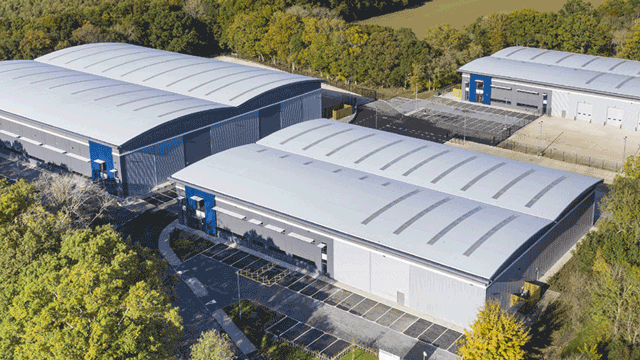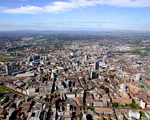The last boom in the south Manchester market happened some time around the turn of the century. Fuelled by an explosion in IT occupiers and an enthusiasm for shiny, out-of-town space, the market bubbled up and just as quickly went flat – a place from which, despite expectations to the contrary, it has never truly regained its fizz.
The following decade saw occupiers flock towards a new generation of space with large floorplates in city centre locations such as Allied London’s Spinningfields.
Occupiers realised that their staff were looking for public transport links and somewhere to pick up their groceries at lunchtime. This left behind around 1m sq ft of vacant buildings to the south of the city, some of which have yet to be filled after almost a decade.
The question, then, is where does the south Manchester market go from here? Adaptation to the changing needs of occupiers appears to be crucial, while a new generation of developments could be about to set the sub-market back on a strong footing.
Take-up last year in south Manchester stood at just below 485,000 sq ft. This is by no means a catastrophe but is still some way below the five-year annual average of more than 550,000 sq ft. By comparison, take-up during the dotcom boom year of 2000 was close to 900,000 sq ft.
Wes Erlam, development surveyor at Muse Developments, the firm behind the 70-acre Cheadle Royal scheme on the A34, believes that news of the death of south Manchester has been greatly exaggerated in recent years. “South Manchester has suffered in the same way as have many regional sub-markets,” he says.
“The reality is that it continues to perform well and enjoys an average 10-year take-up of well over 500,000 sq ft. Although recent take-up has reduced, in relation to out-of-town markets in other provincial cities, south Manchester is by far the largest.”
According to some agents, one of the main reasons south Manchester is considered to be performing poorly is because of an unfortunate comparison with Manchester city centre, which has performed above all expectations in recent years. City centre take-up topped 1.3m sq ft last year, returning it to pre-downturn levels.
Jones Lang LaSalle’s Andrew Gardiner says: “A number of regional centres last year saw their take-up fall short of their five-year annual averages. So, in comparison with the wider market, it’s not necessarily the case that south Manchester isn’t pulling its weight.”
Bouncing back
Others suggest that while the market was in the doldrums for a while, it has recently bounced back thanks to a number of deals, including US-based scientific firm Waters Corporation striking a deal with Royal Bank of Scotland that will see it build a £60m facility in Wilmslow.
In addition, at Dutch group Wereldhave’s Towers Business Park in Didsbury, US manufacturing firm SPX signed for 25,000 sq ft of offices last year.
MAX Property Group’s Concord Business Park, close to the airport, also recently moved up in the world thanks to a 10,800 sq ft letting to lift manufacturer ThyssenKrupp Elevator. Additionally, Shell is understood to be under offer on 30,000 sq ft at Concord.
Will Lewis, partner at OBI Property, which is joint letting agent at Towers, says: “The idea that the market in south Manchester has ‘had its day’ might have been supported 18 months ago, but recently we have seen that it is still very much on the agenda for occupiers.”
The fact remains, however, that across south Manchester, vacancy rates remain close to 20%. In addition, certain schemes, such as the 33,000 sq ft Pacific House at Atlas Business Park and the majority of The Royals at Sharston, remain vacant after years on the market.
Off the record, one agent compares certain business parks with “ghost towns”. This is hardly a sub-market that can be said to be in rude health.
As well as business parks, south Manchester covers a range of town centres including Altrincham and Stockport. According to analysis by Manchester-based agent WHR, the towns of Wilmslow and Sale have been “dominant” over the past year, while 57% of deals were in the sub-1,000 sq ft bracket, which is well catered for by in-town space.
Alex Russell, associate partner at WHR, says: “Among occupiers there has been a big push to be near a town centre for the benefit of staff and to be close to train stations. There are a couple of examples of business parks where you have that but the majority don’t.
“Enquiries normally mention these points – it’s high on the agenda because of staff.”
Charles Murray, director of Altrincham-based Regional Property Solutions, believes preferences depend on the nature of the occupier and that the right balance needs to be stuck between amenities and ease of access.
“A large software company might have a lot of staff driving in from a wide geographical area, whereas a call centre with younger employees is more likely to need access to public transport,” he says.
The provision of amenities has become a key concern for developers of business park space in recent years. One agent reports that Concord “keeps popping up” as a popular choice with occupiers, thanks largely to the provision of a Starbucks-branded coffee outlet.
Attracting occupiers
It is fair to say that MAG Developments, the property arm of Manchester Airport Group, is planning something more than a Starbucks stall at the forthcoming Airport City scheme next to Manchester airport. Yet, the principle of providing amenities that office workers can relate to remains the same in terms of its role in attracting occupiers.
“There are different issues to consider today,” says MAG’s managing director, John Atkins. “Hitching on to a motorway junction with no access to retail or leisure and no public transport links is something that just is not attractive in the market.
“But if you can link together the advantages of a city centre with the accessibility of international travel and local public transport facilities, you have something that can compete.”
As well as 750,000 sq ft of offices and 1.6m sq ft of manufacturing and logistics space, Airport City includes 1,300 hotel bedrooms and a mix of retail and leisure facilities. A planning application is expected later this year.
Atkins believes that there is a demand for business park space at the airport from companies seeking European headquarters buildings in sectors such as pharmaceuticals and digital. He also expects the scheme to benefit from a link with the regeneration of nearby Wythenshawe, which will provide a labour supply who can access the site via public transport.
While easy access by car remains a major plus, the need for employee access to shops and public transport have clearly become much more important to occupiers during the last decade. For the south Manchester market to regain its former effervescence, these are factors for developers and landlords to consider.











